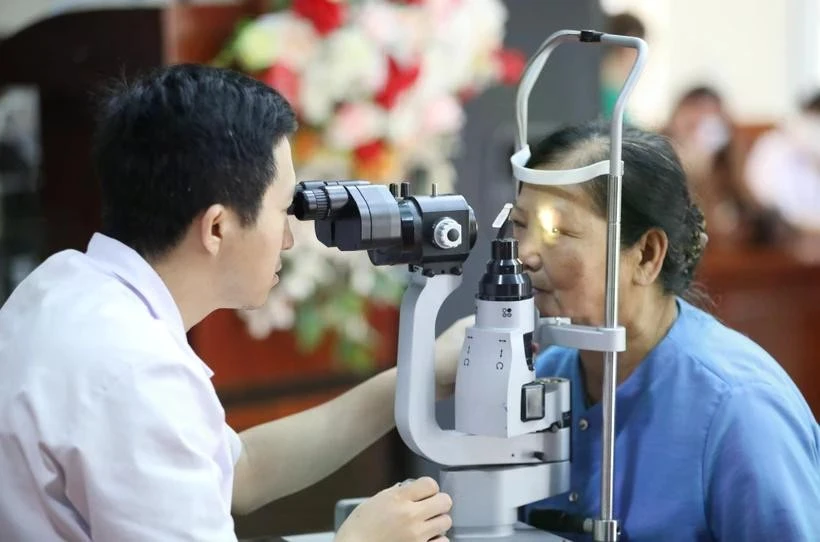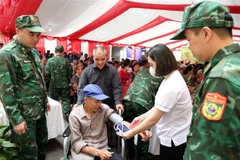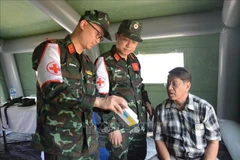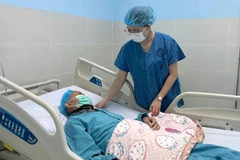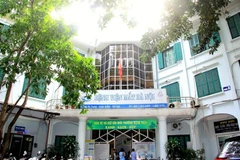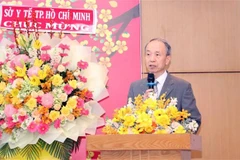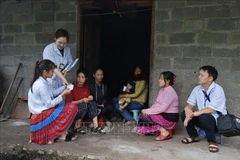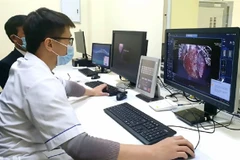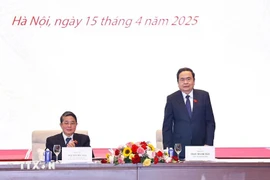Hanoi (VNA) – The Ministry of Health on April 14, held a ceremony in Hanoi to announce that Vietnam has officially eliminated trachoma, one of the leading preventable causes of blindness – as a public health problem.
The country is now among 21 nations recognised for successfully achieving this milestone.
A preventable cause of blindness
During the 75th session of the World Health Organisation (WHO) Regional Committee for Western Pacific, held in the Philippines on October 21 last year, WHO officially acknowledged and commended Vietnam’s accomplishment in eliminating trachoma. This marks a significant achievement for the nation and the health sector in particular, following more than seven decades of persistent efforts in combatting the disease.
According to Deputy Minister of Health Tran Van Thuan, trachoma has long posed a major public health challenge in countries with limited socio-economic development. WHO data show that by 2023, the global population at risk of trachoma had declined by 7%, from 125 million in 2022 to around 115.7 million. Most of those still at risk live in areas where the prevalence of active Trachomatous inflammation - follicular (TF) remains at or above 5%, typically in regions with poor sanitation and limited access to healthcare.
A coordinated national effort
For decades, Vietnam’s Ministry of Health has implemented the SAFE strategy recommended by WHO: Surgery, Antibiotics, Facial Washing, and Environmental improvement. This strategy was rolled out comprehensively and tailored to local conditions, with strong coordination across government levels and effective support from international organisations such as UNICEF, the Ministry of Education and Training, the Vietnam Women’s Union, and numerous non-government organisations (NGOs).
Implementation involved multiple phases of surveys, interventions, and monitoring in endemic areas, with active participation from the health network at all levels. In particular, regular surveys and impact assessments carried out from 1995 to 2023 provided a robust scientific and practical basis for WHO’s verification of Vietnam’s elimination of trachoma.
Deputy Minister Thuan also commended the Central Eye Hospital for its leading technical role in overseeing surveillance, training, professional guidance, data management, and close collaboration with local authorities throughout the national programme.

Sustaining the gains
Dr Saia Ma’u Piukala, WHO Regional Director for the Western Pacific, called Vietnam’s success a testament to government commitment, healthcare dedication, and community engagement, showing how targeted action and strong partnerships can drive lasting public health change.
Meanwhile, Dr Angela Pratt, WHO Representative in Vietnam, highlighted the country’s efforts to reach underserved communities and invest effectively in public health, securing a future free from trachoma.
Deputy Minister Tran Van Thuan stressed that elimination does not mean complacency. Vietnam must now sustain its progress through continued surveillance, early detection, public awareness, and adequate funding. These efforts are backed by numerous key government policies./.
